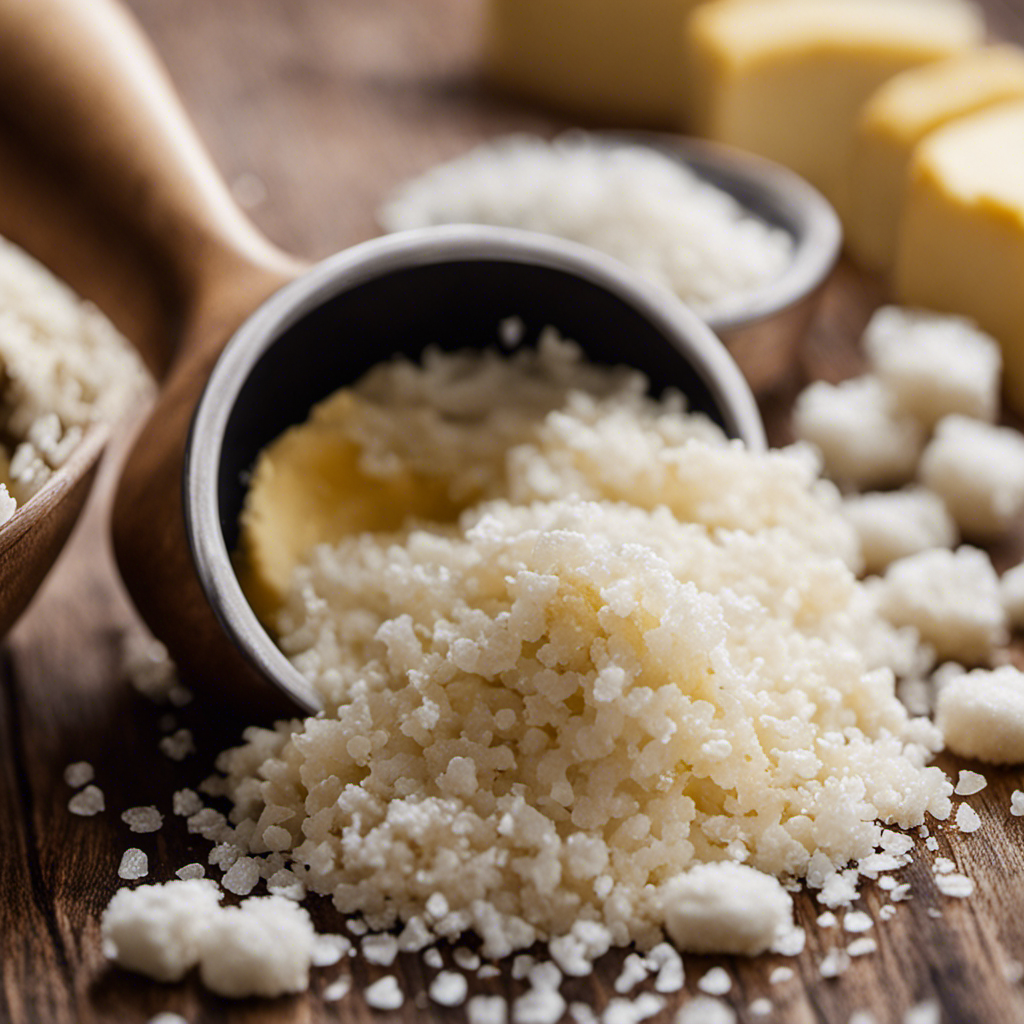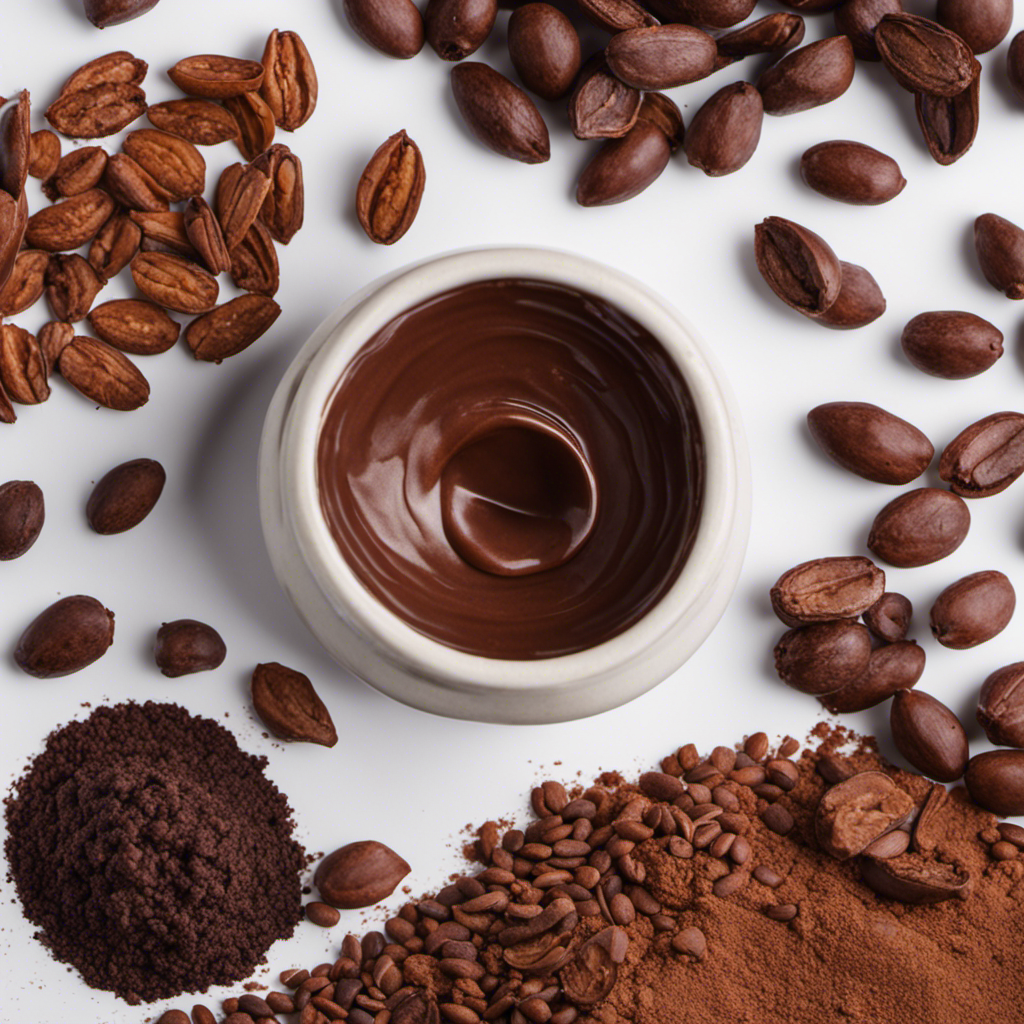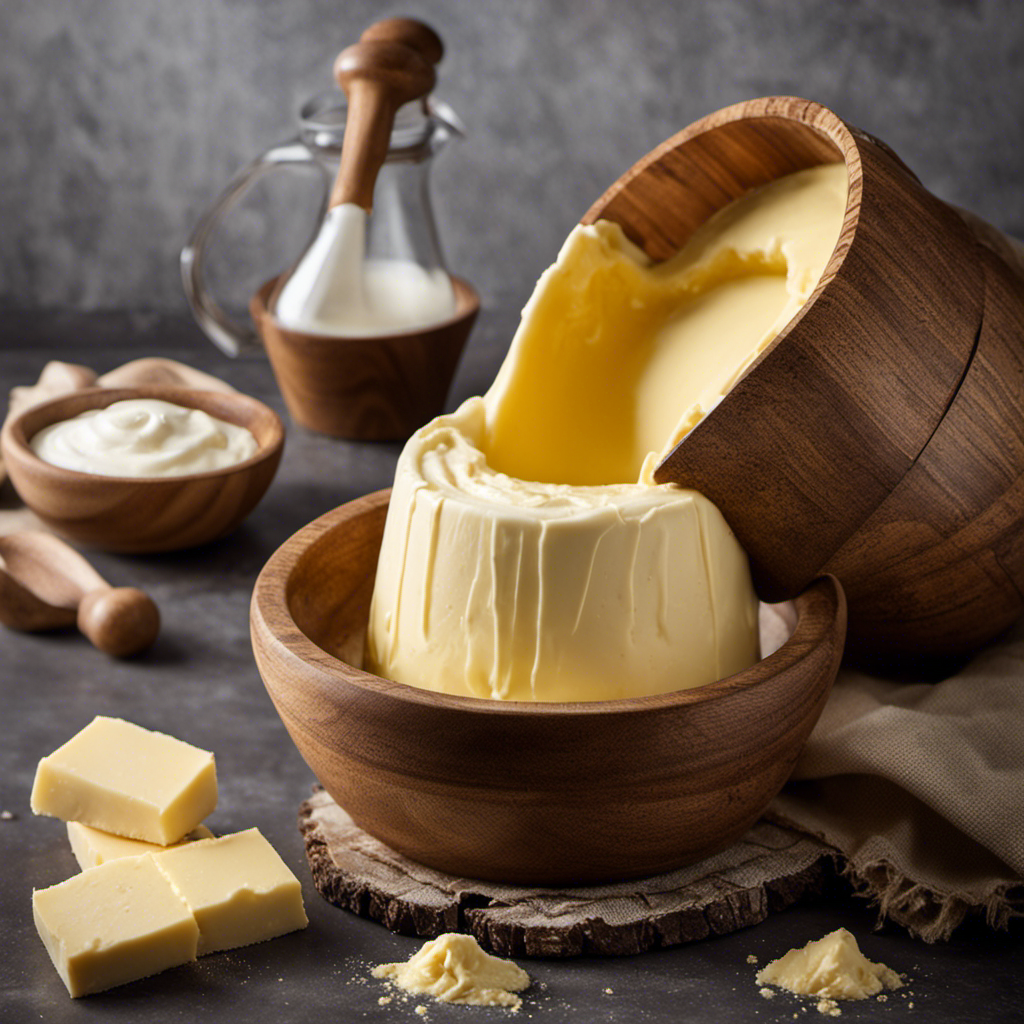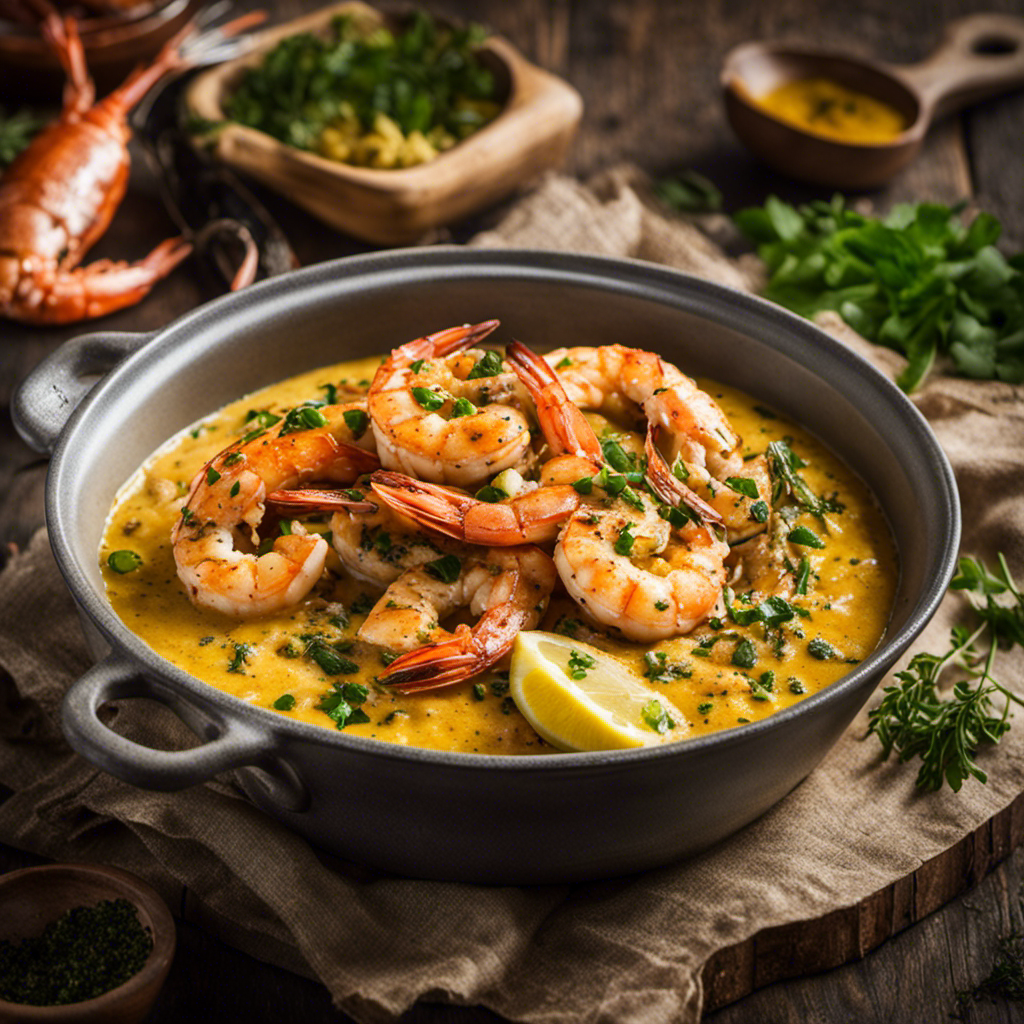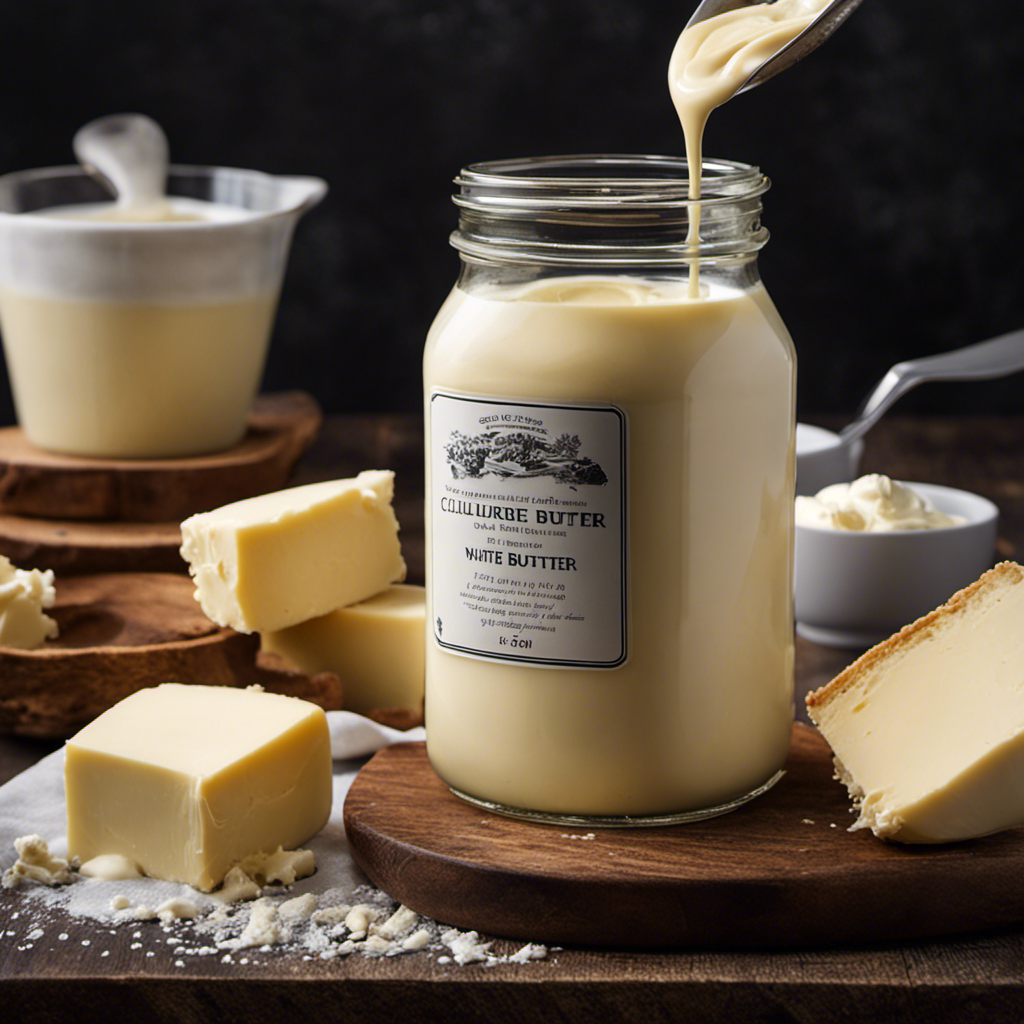Recipes & Culinary Uses
Create a Stunning Butter Board in 5 Simple Steps
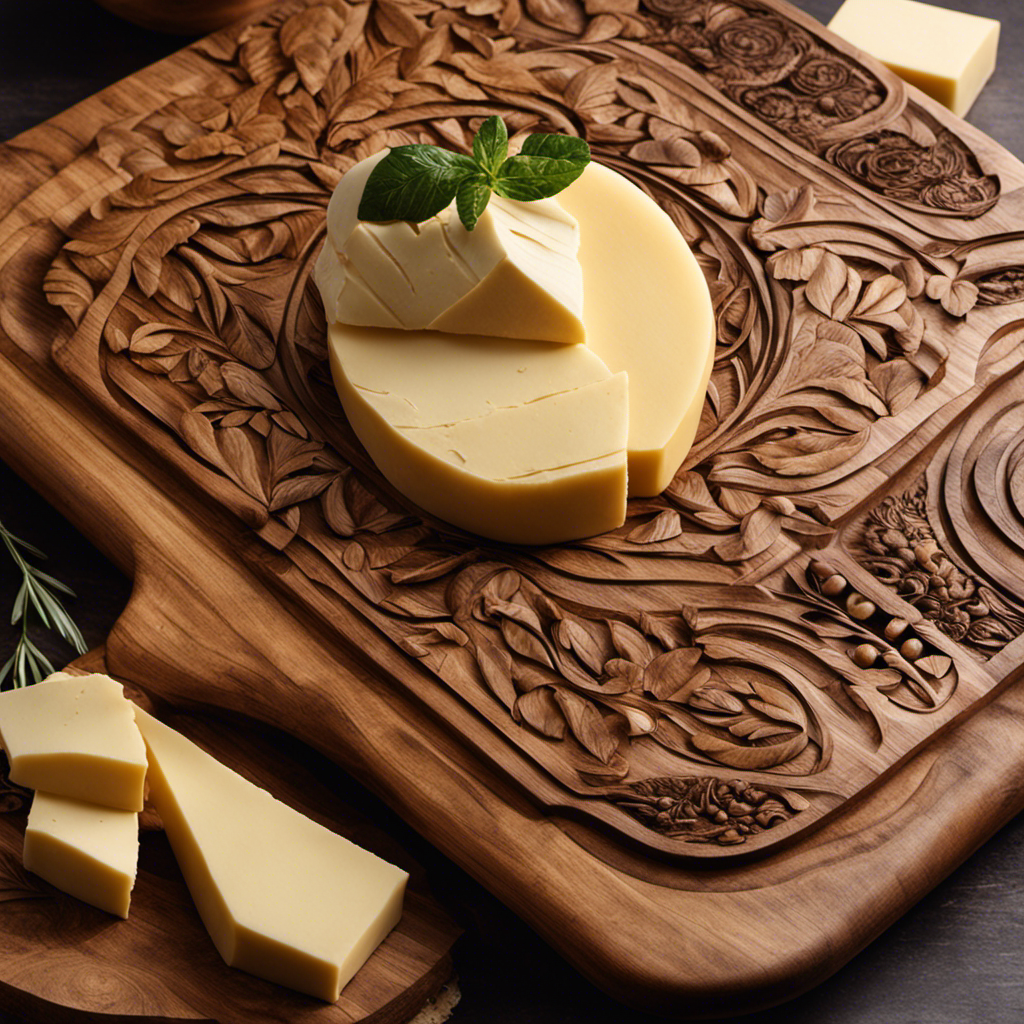
I absolutely love cooking, and one of my favorite things to make in the kitchen is a butter board. It’s a versatile tool that not only adds a touch of elegance to your table, but also serves as a practical way to serve and spread butter.
In this article, I’ll guide you through the step-by-step process of making your own butter board using the right wood, essential tools, precise measurements, and a food-safe finish.
Let’s get started!
Key Takeaways
- Wood selection is crucial for durability and appearance, with maple and walnut being popular choices.
- Straight and even grain patterns provide stability, while knots and irregular grain should be avoided.
- Essential tools for making a butter board include a sharp knife, cutting board, and rolling pin.
- When applying a food-safe finish, options like mineral oil, beeswax, shellac, tung oil, and varnish can be used.
Selecting the Right Wood
You’ll want to make sure you’re selecting the right wood for your butter board. The wood selection is crucial as it determines the durability and appearance of your board. When choosing wood, consider its hardness, density, and resistance to moisture.
Hardwoods like maple and walnut are popular choices due to their strength and ability to withstand knife cuts. Additionally, pay attention to the wood grain. Straight and even grain patterns are ideal as they provide stability and prevent warping. Avoid woods with knots or irregular grain, as they may compromise the structural integrity of your board.
Now that you understand the importance of wood selection, let’s move on to gathering the necessary tools and materials for the next step.
Gathering the Necessary Tools and Materials
When it comes to starting a new project, it’s essential to have the right tools at your disposal.
As a beginner, there are a few key tools that I have found to be essential in my woodworking journey.
Additionally, choosing the right materials is crucial for the success of your project, as certain woods and finishes can greatly impact the final result.
Lastly, I’ve learned some tips and tricks for efficient gathering of tools and materials, which can save you time and frustration in the long run.
Essential Tools for Beginners
To get started on your butter board, the essential tools for beginners include a sharp knife, a cutting board, and a rolling pin. These tools are crucial in creating a functional and well-designed butter board. When selecting wood types for your board, it’s important to choose a hardwood that is durable and resistant to moisture. Some beginner-friendly wood options include maple, walnut, and cherry. These woods are not only beautiful but also provide a sturdy surface for buttering. Additionally, when considering the design of your butter board, opt for a simple and straightforward layout. This will make it easier to spread butter evenly and efficiently. Remember, the key to a successful butter board lies in selecting the right tools and materials that suit your needs and skill level.
| Tools | Materials |
|---|---|
| Sharp knife | Hardwood |
| Cutting board | Maple |
| Rolling pin | Walnut |
| Cherry |
Choosing the Right Materials
When selecting the materials for your butter board, I highly recommend considering the durability and moisture resistance of hardwood options like maple, walnut, and cherry. These woods are not only beautiful, but they also have the necessary properties to withstand the constant use and exposure to moisture that comes with butter preparation.
To ensure accuracy and precision in your measurements, it’s important to select wood that is stable and won’t warp or twist over time. Hardwoods like maple, walnut, and cherry are known for their stability, making them ideal choices for your butter board. Additionally, these woods have a tight grain structure, which allows for a smooth and even surface that is essential for precise measuring techniques.
Tips for Efficient Gathering
For efficient gathering, remember to have a designated space for all your ingredients and utensils. This will save you time and make the process smoother. Here are some time-saving techniques to help you gather everything you need quickly:
- Make a checklist of all the ingredients and utensils you will need.
- Organize your ingredients and utensils in separate containers or compartments.
- Keep commonly used ingredients and utensils within easy reach.
- Group similar ingredients together to streamline the gathering process.
- Clean as you go to maintain an organized workspace.
By following these tips, you will be able to gather your ingredients and utensils efficiently, saving you valuable time in the kitchen.
Now, let’s move on to the next step: measuring and cutting the board.
Measuring and Cutting the Board
Grab your measuring tape and make sure you’ve got the correct dimensions for cutting the board. When it comes to measuring techniques, accuracy is key. Start by measuring the length and width of the board, ensuring you have the precise measurements required for your project. Use a sharp pencil to mark the cutting lines on the board, ensuring they are straight and aligned.
Now, let’s talk about cutting methods. Depending on the type of board and your desired outcome, there are various cutting techniques to consider. For a clean and precise cut, a circular saw or a table saw can be used. If you prefer a more intricate design, a jigsaw might be the better option.
Remember to always prioritize safety when operating power tools and wear appropriate protective gear.
Sanding and Smoothing the Surface
To achieve a smooth and polished finish, start by sanding the surface of the wood with a fine-grit sandpaper. This will help remove any roughness or imperfections.
Here are some essential sanding tips and smoothing techniques:
- Use a sanding block or a power sander for even pressure and consistent results.
- Start with a low-grit sandpaper to remove larger imperfections, then gradually move to a higher grit for a finer finish.
- Sand in the direction of the wood grain to avoid creating scratches or marks.
- Always wear safety goggles and a dust mask to protect yourself from flying debris and dust particles.
- Before applying any finish, make sure to wipe away any sanding residue with a clean cloth or tack cloth.
Applying a Food-Safe Finish
When applying a food-safe finish, you should ensure that the product you choose is specifically designed for use on wooden surfaces. There are various food safe finishes available in the market that can provide a protective coating for your wooden butter board. These finishes are specially formulated to be non-toxic and safe for contact with food.
One popular option is mineral oil, which is widely used for its ability to penetrate the wood and provide a natural-looking finish. Another alternative is beeswax, which can create a smooth and water-resistant surface. Other food-safe finishes include shellac, tung oil, and varnish.
It is important to read the product labels and choose a finish that is explicitly labeled as food safe to ensure the safety of your butter board.
Adding Decorative Elements (Optional
If you want to enhance the aesthetic appeal of your wooden surface, consider adding decorative elements such as engraved patterns or inlaid designs. These decorative designs can add a unique touch to your wooden piece and make it stand out.
Here are five options for embellishments that you can consider:
- Engraved patterns: Create intricate designs by carving into the wood surface using specialized tools.
- Inlaid designs: Add contrasting wood or other materials to create beautiful patterns and textures.
- Woodburning: Use a heated tool to burn designs onto the wood surface, creating a rustic and artistic look.
- Stenciled designs: Use stencils and paint to create precise and intricate patterns on your wooden surface.
- Applied accents: Add decorative elements such as metal accents, beads, or gemstones to create a more elaborate and eye-catching design.
Creating a Groove for the Butter Knife
To create a groove for the butter knife, you can use a router or a chisel to carve out a shallow recess in the wooden surface. The groove depth should be deep enough to securely hold the butter knife in place, but not too deep to compromise the board’s strength.
I recommend a groove depth of about 1/4 inch to 1/2 inch. When carving the groove, it’s important to consider the angle of the butter knife. The groove should be wide enough and angled correctly to allow for easy insertion and removal of the butter knife.
Once the groove is complete, you can move on to finishing the edges to ensure a smooth and polished look.
Finishing the Edges
When it comes to finishing the edges of a woodworking project, there are two key points to consider: smoothing and sanding techniques, and choosing a finishing method.
Smoothing and sanding techniques involve using various tools and methods to achieve a smooth and polished edge.
The choice of finishing method, on the other hand, depends on factors such as the type of wood used, the desired appearance, and the intended use of the finished piece.
Smoothing and Sanding Techniques
For a smooth finish, start by sanding the surface of the butter board with fine-grit sandpaper. This will help remove any roughness or imperfections.
Here are some key techniques and methods to consider when smoothing and sanding your butter board:
- Sandpaper grit: Begin with a coarse-grit sandpaper to remove any major inconsistencies, then gradually move to finer grits for a smoother surface.
- Circular motion: Use a circular motion when sanding to ensure even coverage and prevent any uneven spots.
- Light pressure: Apply light pressure when sanding to avoid damaging the wood or creating deep scratches.
- Smooth transitions: Pay attention to the edges and corners, ensuring they are smooth and free from any sharp edges.
- Sanding block: Consider using a sanding block to maintain a consistent pressure and prevent uneven sanding.
Choosing a Finishing Method
Choosing the right finishing method can greatly enhance the overall appearance and durability of your wooden surface. When it comes to finishing techniques, there are a variety of options available.
One popular method is applying a clear coat, such as polyurethane or lacquer, which adds a protective layer and enhances the natural beauty of the wood.
Another option is staining, which adds color and depth to the wood while still allowing the grain to show through.
If you prefer a more natural look, you can opt for oil finishes, such as tung oil or linseed oil, which penetrate the wood to provide a rich, satin-like finish.
Alternatively, you can explore alternative options like wax or shellac, which offer unique finishes that can be easily maintained.
Ultimately, the choice of finishing method depends on your desired look and the level of protection you require for your wooden surface.
Adding Non-Slip Feet
To prevent the butter board from sliding, you can attach non-slip feet using adhesive or screws. This will ensure a secure and stable surface for spreading butter or other ingredients. Here are some options for adding non-slip feet to your butter board:
- Rubber feet: These provide excellent grip and are easy to attach using adhesive.
- Silicone pads: These are durable and heat-resistant, ensuring a long-lasting non-slip grip.
- Cork pads: These natural pads not only prevent slipping but also add a rustic touch to your butter board.
- Traction tape: This adhesive tape has a textured surface that enhances grip and can be easily cut to size.
- Self-adhesive bumpers: These small pads are simple to install and provide a reliable non-slip solution.
By adding non-slip feet to your butter board, you can ensure a secure and stable surface for all your butter spreading needs.
Now, let’s move on to the next section and learn about caring for your butter board.
Caring for Your Butter Board
When it comes to caring for your butter board, there are a few key points to keep in mind.
First, cleaning and maintenance is crucial to ensure the board remains in good condition.
Second, the longevity and durability of the butter board can be enhanced by following proper care instructions.
Lastly, proper butter handling techniques are essential to avoid any contamination or damage to the board.
Let’s delve into these topics and learn how to properly care for your butter board.
Cleaning and Maintenance
Keeping my butter board clean and well-maintained is essential for ensuring its longevity and hygiene. Here are some cleaning techniques and tips to prevent bacterial growth:
-
Regularly wash the butter board with hot, soapy water after each use. Use a soft brush or sponge to scrub away any food residue or grease.
-
Dry the board thoroughly with a clean towel to prevent moisture buildup.
-
Occasionally sanitize the board by applying a mixture of vinegar and water or a food-grade sanitizer.
-
Avoid using harsh chemicals or abrasive cleaners that can damage the board’s surface.
Longevity and Durability
By properly cleaning and maintaining it, I can ensure that my butter board lasts for a long time and remains durable. Here are some longevity tips and durability techniques I use to keep my butter board in great condition:
| Longevity Tips | Durability Techniques |
|---|---|
| Regularly oil the board | Avoid using harsh detergents |
| Keep the board dry | Store in a cool, dry place |
| Avoid cutting on the board | Use a separate knife for butter |
| Sand and refinish the board when needed | Use a cutting board oil to protect the surface |
Following these practices helps to prevent cracking, warping, and staining, ensuring that my butter board can withstand years of use. Proper cleaning and maintenance are essential for the longevity and durability of any kitchen tool or utensil. Now, let’s move on to the next section and discuss proper butter handling techniques.
Proper Butter Handling
To ensure the best results, it’s important to handle butter properly. Here are some key tips for handling butter:
- Store butter in an airtight container in the refrigerator to keep it fresh.
- Allow butter to come to room temperature before using for easier spreading.
- Use a butter knife or butter curler to create decorative shapes for serving.
- Experiment with flavored butters by adding herbs, spices, or citrus zest.
- Enhance the presentation by using a butter dish or a butter bell to keep it at the perfect temperature.
Properly handling butter not only ensures its freshness and flavor but also adds an elegant touch to any meal.
Now, let’s move on to troubleshooting and tips to further enhance your butter board experience.
Troubleshooting and Tips
If you’re experiencing any issues or need some helpful pointers, don’t hesitate to ask for assistance.
When it comes to making a butter board, there are a few common mistakes that people often make. One of the most common mistakes is not properly cleaning the board before starting. Any leftover residue or moisture can affect the quality and taste of the butter. To avoid this, make sure to thoroughly clean and dry the board before using it.
Another troubleshooting tip is to ensure that the butter is at the correct temperature before spreading it on the board. If the butter is too cold, it will be difficult to spread, and if it’s too warm, it will melt too quickly. Finding the right balance is key.
Lastly, make sure to use a sharp knife when cutting the butter. Dull knives can cause the butter to tear or crumble, making it difficult to spread smoothly.
Frequently Asked Questions
How Long Does It Take for the Food-Safe Finish to Dry?
The food-safe finish typically takes around 24 hours to dry completely. It is crucial to follow the best practices for applying the finish to ensure a proper and safe outcome.
Can I Use Any Type of Wood for Making a Butter Board?
Yes, you can use any type of wood for making a butter board. Some popular choices include maple, walnut, and cherry. Each wood type has its pros and cons in terms of durability, appearance, and ease of maintenance.
What Type of Finish Should I Use for a Butter Board?
For a butter board, it’s important to choose a food safe finish. Different types of wood can be used, but make sure the finish is safe for contact with food. Apply the finish according to the manufacturer’s instructions.
Can I Add a Personal Design or Logo to My Butter Board?
Yes, you can absolutely add a personalized design or logo to your butter board. There are various branding options available, such as laser engraving or custom decals, to make your board unique.
How Often Should I Reapply the Food-Safe Finish to Maintain the Quality of the Board?
I find that the food-safe finish on my butter board maintains its quality best when I reapply it every few months. This ensures that the board stays protected and looking its best.
Conclusion
Well, there you have it folks! You now possess the sacred knowledge of how to craft your very own butter board.
With the right wood, tools, and a little elbow grease, you can create a masterpiece that will make all your friends green with envy.
Remember to sand and smooth that surface until it’s as smooth as butter itself.
And don’t forget to add those non-slip feet, because nobody wants a butter board sliding all over the place.
So go forth, my fellow butter enthusiasts, and may your butter boards be the talk of the town!
From sneaky childhood butter licks to penning some of our most popular articles, Jamie’s journey with butter has been lifelong. His culinary background gives him a unique perspective, allowing him to craft mouthwatering articles that educate and tantalize equally. Jamie’s travel adventures revolve around finding the world’s best buttery treats when he isn’t writing.
Recipes & Culinary Uses
Converting 6 Tablespoons of Butter Equals How Many Cups
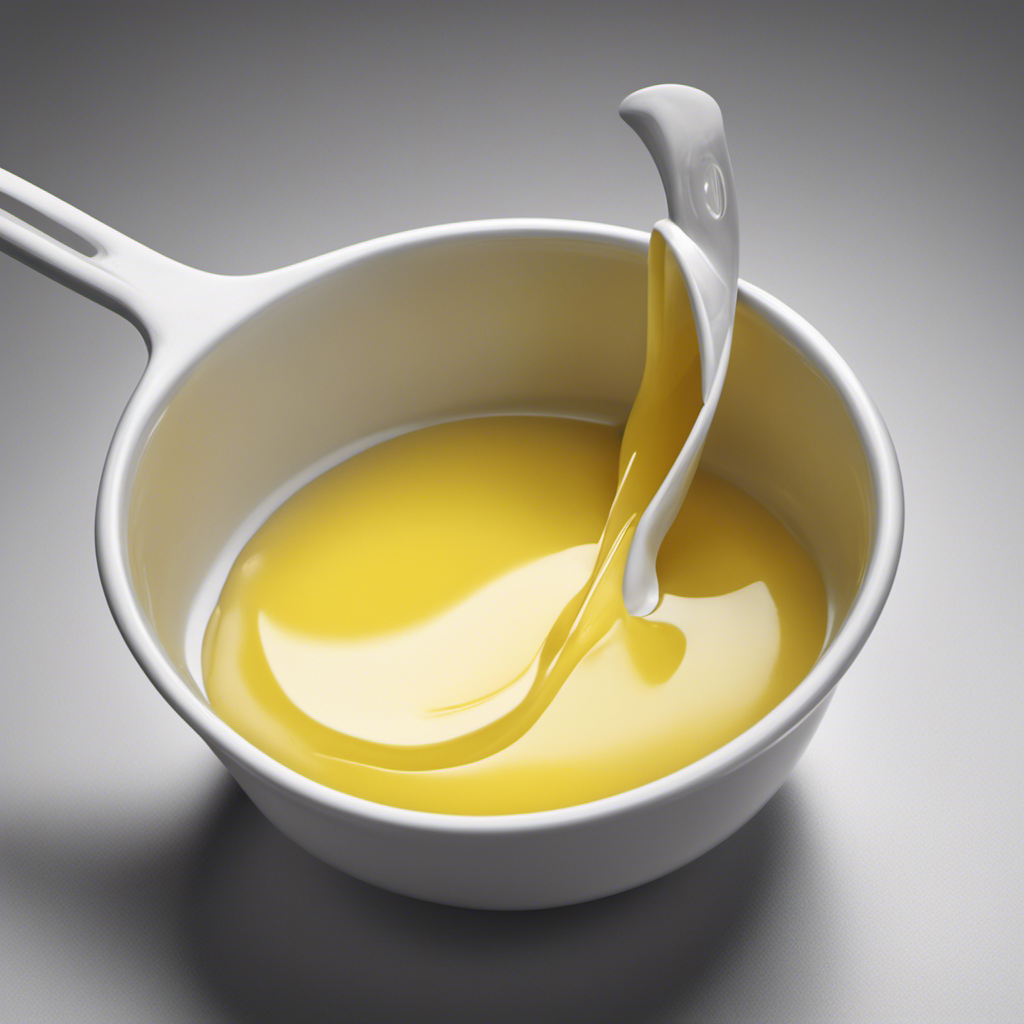
I have always been very particular about accurate measurements when cooking.
So, when a recipe called for 6 tablespoons of butter, I wondered how many cups that would be.
After some research and calculations, I discovered the conversion ratio and the answer.
In this article, I’ll share with you the exact measurement and some tips for accurately measuring butter in cups.
So, let’s dive in and simplify your cooking process!
Key Takeaways
- 6 tablespoons of butter is equal to 0.375 cups
- Knowing the conversion ratios between tablespoons and cups ensures precise measurements when using butter in recipes
- Using a kitchen scale for accurate measurement of ingredients is recommended
- Experimenting with alternative ingredients like applesauce, mashed bananas, avocado, or coconut oil can be done when substituting butter
Understanding the Conversion Ratio
I understand how the conversion ratio works – 1 cup of butter is equal to 16 tablespoons. When measuring butter in grams, it’s important to know how to convert it from sticks to cups accurately.
One stick of butter weighs approximately 113 grams or 4 ounces. To convert this to cups, you need to know that there are 8 tablespoons in a stick of butter. So, if you’ve 1 stick of butter, you’ve 8 tablespoons, which is equivalent to half a cup.
If you’ve 2 sticks of butter, you’ve 16 tablespoons, which is equal to 1 cup. It’s essential to know these conversions to ensure precise measurements when cooking or baking with butter.
Calculating Butter in Cups
To convert tablespoons of butter to cups, I’d simply divide the amount by 16. When it comes to converting butter measurements in metric units, it’s important to remember that 1 cup of butter is equal to 16 tablespoons. So, if you’ve 8 tablespoons of butter, you’d divide 8 by 16 to get 0.5 cups.
This conversion is essential when following recipes that call for butter in cups rather than tablespoons. Additionally, if you prefer to use butter substitutes in your recipes, such as margarine or oil, it’s crucial to know the conversion ratio between these substitutes and butter. Keep in mind that different substitutes have different ratios, so it’s always best to consult a reliable conversion chart or follow the instructions provided on the substitute’s packaging.
Understanding these conversions will ensure accurate measurements in your recipes and help you achieve the desired results. Now, let’s move on to some tips for accurate measurement.
Tips for Accurate Measurement
Using a kitchen scale is a precise way to measure ingredients for accurate recipe results. It ensures that you’re using the exact amount of each ingredient, which is crucial for achieving the desired texture and flavor in your baked goods.
When it comes to measuring butter, many people make common mistakes that can affect the outcome of their recipes. One common mistake is using a measuring cup to measure solid butter, resulting in inaccurate measurements. Instead, it’s best to use a kitchen scale to measure butter in grams or ounces.
Another mistake is using cold butter when the recipe calls for softened butter. This can affect the texture of your baked goods.
If you don’t have butter on hand or prefer a healthier alternative, there are several options you can use in baking. Some alternatives for butter include applesauce, mashed bananas, avocado, or coconut oil. These substitutions may slightly alter the taste and texture of your baked goods, so it’s important to experiment and adjust the recipe as needed.
Converting Recipes With Butter Measurements
When converting recipes, it’s important to accurately measure the amount of butter needed for the desired outcome. In baking, butter adds flavor, moisture, and richness to our favorite treats. However, there may be times when we need to use butter substitutes for dietary reasons or simply because we ran out of butter. In such cases, it’s crucial to know the proper conversions to ensure our recipes turn out just right.
To measure butter without a scale, you can use the tablespoon method. One stick of butter is equal to 8 tablespoons or 1/2 cup. So, if your recipe calls for 1 cup of butter, you’ll need 2 sticks or 16 tablespoons.
Now that we’ve covered butter measurements, let’s move on to common culinary conversions.
Common Culinary Conversions
I often find it helpful to have a list of common culinary conversions on hand for quick reference in the kitchen. When it comes to baking recipes that call for butter, it’s important to know how to convert butter measurements accurately.
Sometimes, you may need to substitute butter with a different ingredient, like oil or margarine. To convert tablespoons of butter to cups, remember that 1 cup of butter is equal to 16 tablespoons. So, if a recipe calls for 8 tablespoons of butter, you’d need half a cup.
It’s crucial to get these conversions right to ensure the perfect texture and flavor in your baked goods. Having a list of butter substitutes and knowing how to convert butter measurements will make your time in the kitchen much easier.
Frequently Asked Questions
Can I Use Margarine Instead of Butter in Recipes That Call for Cups of Butter?
Sure, you can use margarine instead of butter in recipes that call for cups of butter.
However, keep in mind that margarine and butter have different properties. Butter contains more fat and has a rich flavor, while margarine is made from vegetable oils and has a milder taste.
How Do I Convert Tablespoons of Butter to Grams?
When it comes to converting tablespoons of butter to grams, I’ve got you covered. Let’s skip the context and dive right into the current question.
Converting tablespoons to grams can be a bit tricky, but fear not! There are handy conversion charts available that provide precise measurements for butter. These charts will make your life so much easier when it comes to baking and cooking. Trust me, they’re a game-changer.
What Is the Equivalent Measurement for 6 Tablespoons of Butter in Ounces?
To find the equivalent measurement for 6 tablespoons of butter in ounces, you’ll need to convert it. I can help you with that!
Converting tablespoons to ounces is pretty straightforward. One tablespoon is equal to 0.5 ounces.
So, if you’ve 6 tablespoons of butter, it would be equivalent to 3 ounces.
Are There Any Substitutions for Butter if I Want to Make a Dairy-Free Recipe?
When it comes to making a dairy-free recipe, there are several options you can use as substitutes for butter.
One popular choice is dairy-free butter substitutes, which are made from plant-based oils. These substitutes can be used in equal amounts as butter in most recipes.
Additionally, there are other tips for baking without butter, such as using coconut oil or applesauce as alternatives.
Experimenting with different substitutes can help you find the perfect dairy-free option for your recipe.
How Can I Accurately Measure Butter Without Using Tablespoons or Cups?
When it comes to accurately measuring butter without using tablespoons or cups, there are a few alternative methods. One approach is to use the markings on the butter wrapper itself. Each stick of butter usually has measurements marked in tablespoons and cups.
Another option is to use a kitchen scale to weigh the butter. This method allows for precise measurements and eliminates the need for volume-based measurements.
Conclusion
In conclusion, understanding the conversion ratio between tablespoons and cups is essential for accurate measurement in cooking.
By knowing that 6 tablespoons of butter is equal to 1/3 cup, you can easily adapt recipes and achieve the desired results.
Remember to use proper measuring tools and techniques for precise measurements.
With this knowledge, you can confidently convert recipes and create delicious dishes without any confusion.
Diana’s meticulous nature and editorial prowess set the gold standard for our content. With over a decade in the culinary and publishing industries, her guidance ensures that every article perfectly blends information and entertainment. A culinary experimenter, Diana loves whipping up new butter-based concoctions in her kitchen.
Recipes & Culinary Uses
Measuring Butter: How Many Cups in One Cube?
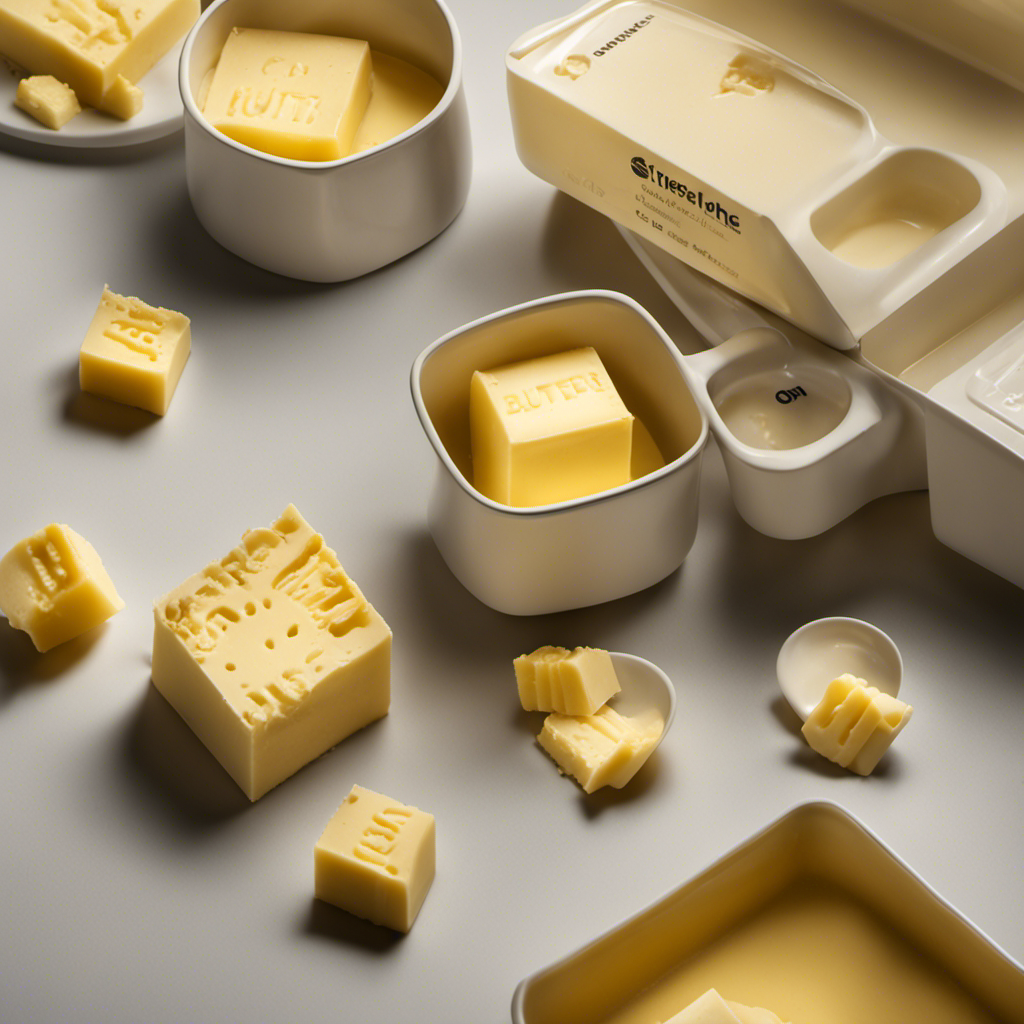
Yes, I have experienced being in the middle of a recipe and discovering that I lack the proper measurements.
One common dilemma is figuring out how many cups are in one cube of butter. It can be confusing, but fear not! In this article, I will demystify the measurement conundrum and provide you with a handy conversion chart to make your baking adventures a breeze.
So let’s dive in and master the art of butter measurements together!
Key Takeaways
- 1 cube of butter is equivalent to 1/2 cup of butter.
- The conversion ratio for cubes to cups is 1 cup for every cube of butter.
- When a recipe calls for 2 cubes of butter, you will need 2 cups of butter.
- It’s important to check the packaging or do research for butter substitutes, as not all substitutes have the same conversion ratio.
The Measurement Conundrum: Cups Vs. Cubes
Understanding butter measurements can be a bit confusing, especially when it comes to converting butter ratios. To clear up this conundrum, let’s dive into the world of butter measurements.
When a recipe calls for a ‘cube’ of butter, it typically refers to a standard stick of butter, which is 1/2 cup or 8 tablespoons. However, it’s important to note that not all butter packages are labeled in sticks. Some may come in larger blocks or tubs. In these cases, it’s best to refer to the packaging for the exact cup measurements.
To convert butter ratios, remember that 1 stick of butter is equivalent to 1/2 cup or 8 tablespoons. This knowledge will help you navigate through recipes with ease and ensure accurate measurements.
Understanding Butter Measurements: Cups Explained
To understand how much butter to use, you’ll want to know how cups are used to measure it. Here are some tips and tricks for accurate butter measurements:
-
Butter measurement equivalents: understanding different units of measuring butter
- 1 stick of butter = 1/2 cup = 8 tablespoons = 4 ounces
- 1 cup of butter = 2 sticks = 16 tablespoons = 8 ounces
-
Simplifying cooking measurements: tips and tricks for accurate butter measurements
- If a recipe calls for melted butter, measure it in its solid form and then melt it.
- To measure butter without a scale, use the markings on the wrapper or a tablespoon.
- For easy portioning, cut butter into tablespoons or use a butter dish with markings.
Understanding butter measurements in cups can simplify your cooking experience. By knowing the equivalents and using these tips, you can ensure accurate measurements and perfect results in your recipes.
Converting Butter Measurements: From Cubes to Cups
When it comes to using butter in recipes, understanding the conversion ratio is crucial. This is because different recipes may call for butter to be measured in different ways, such as cups or grams.
Knowing how to convert between these measurements ensures accurate and consistent results in your cooking and baking. Additionally, having a good grasp of common recipes that use butter can help expand your culinary repertoire and allow you to explore different flavors and techniques.
Conversion Ratio for Butter
The conversion ratio for butter is 1 cup for every cube. When it comes to measuring butter, it can be helpful to know the equivalent measurements for different forms of butter. Here are three key points to keep in mind:
-
Cubes to cups: To convert cubes of butter to cups, simply use the conversion ratio of 1 cup for every cube. This means that if a recipe calls for 2 cubes of butter, you would need 2 cups of butter.
-
Butter substitutes: If you’re looking for a butter substitute, keep in mind that not all substitutes will have the same conversion ratio. Some may have a higher or lower fat content, which can affect the measurement. It’s always a good idea to check the packaging or do some research to ensure you’re using the right amount.
-
Accuracy matters: When measuring butter, accuracy is key. Using the correct amount can greatly affect the outcome of your recipe, so be sure to follow the conversion ratio closely.
Now that you know the conversion ratio for butter, let’s explore some common recipes that use this versatile ingredient.
Common Recipes Using Butter
Now that we have covered the conversion ratio, let’s dive into some popular recipes that incorporate butter.
Butter is a versatile ingredient that adds richness and flavor to many dishes. When it comes to measuring butter, it can sometimes be confusing because recipes may call for different units of measurement. To simplify cooking measurements, it’s helpful to know the butter measurement equivalents.
One stick of butter is equal to 1/2 cup or 8 tablespoons. Keep in mind that butter is often sold in 1-pound packages, which contains 4 sticks or 2 cups of butter. By understanding these measurements, you can easily adjust the amount of butter needed in your recipes.
Now, let’s move on to a handy conversion chart that will help you convert cubes of butter to cups.
Handy Conversion Chart: Cubes to Cups
I find it helpful to have a handy conversion chart for butter measurements. Especially when a recipe calls for a specific number of cubes, but I only have a measuring cup. This chart simplifies cooking measurements by providing the equivalent measurement in cups for a given number of butter cubes.
It’s a time-saving tool that ensures accuracy in recipes and makes cooking a breeze.
Butter Measurement Equivalents
To measure how many cups are in a cube of butter, you’ll need to know the butter measurement equivalents. Here are three important equivalents to keep in mind when measuring butter:
-
1 cube of butter is equal to 1/2 cup. This is a common measurement used in many recipes.
-
1 stick of butter is equal to 1/2 cup or 8 tablespoons. Sticks of butter are often marked with tablespoon measurements, making it easy to measure out the desired amount.
-
1 pound of butter is equal to 4 sticks or 2 cups. This is a larger measurement often used in bulk baking or cooking.
Simplifying Cooking Measurements
Remember, it’s helpful to know the equivalents for common cooking measurements so that you can easily follow recipes and achieve accurate results.
One aspect of simplifying cooking measurements is converting butter measurements. When a recipe calls for a ‘cube of butter,’ it can be confusing to determine how much that actually is in cups. To simplify this, it’s important to know that a standard cube of butter is 1/2 cup.
This means that if a recipe calls for 2 cubes of butter, you would need 1 cup. Similarly, if a recipe calls for 4 cubes of butter, you would need 2 cups.
Baking Basics: Butter Measurements Simplified
Calculating how many cups are in a cube of butter is a helpful baking hack you should know. As a baker, understanding butter measurement conversions can make a big difference in the success of your recipes. Here are three benefits of using butter in baking:
-
Flavor: Butter adds richness and depth to baked goods, enhancing their overall taste. Its natural flavor complements a variety of ingredients, making it a versatile choice in the kitchen.
-
Texture: Butter contributes to the tender and moist texture of baked treats. It helps create a delicate crumb and adds a lusciousness that other fats may not achieve.
-
Browning: Butter contains milk solids, which aid in browning during baking. This caramelization process adds a beautiful golden color to pastries and imparts a delightful aroma.
Knowing how to convert a cube of butter into cups allows you to easily adjust recipes and achieve consistent results. So, next time you’re baking, keep this handy baking hack in mind!
The Perfect Ratio: How Many Cups in a Cube of Butter
In my previous subtopic, I discussed the basics of butter measurements and how to simplify them for baking.
Now, let’s dive deeper into the perfect ratio of a cube of butter to cups.
Many recipes call for a specific amount of butter in cups, but it can be confusing when you have a whole stick or cube of butter.
So, to simplify cooking measurements, it’s important to know that one cube of butter is equivalent to 1/2 cup or 8 tablespoons.
This knowledge is essential when following recipes accurately and maintaining the right balance of ingredients.
Mastering Butter Measurements: Cups Vs. Cubes Demystified
To simplify your cooking and baking measurements, it’s important to understand the equivalent ratios between cups and cubes of butter. Here are some butter measurement techniques and common butter substitutes:
-
1 cube of butter is equal to 1/2 cup. This is a standard conversion that can come in handy when a recipe calls for a specific amount of butter in cups.
-
If you need to substitute butter with a healthier option, try using avocado. 1/2 cup of mashed avocado can replace 1 cup of butter in most recipes.
-
Another popular butter substitute is coconut oil. 1 cup of coconut oil can be used instead of 1 cup of butter, but keep in mind that coconut oil has a distinct flavor that may alter the taste of your dish.
Understanding these butter measurement techniques and common substitutes will help you navigate your recipes with ease and achieve delicious results.
Frequently Asked Questions
Can I Use a Different Type of Butter Measurement for Baking Instead of Using Cups or Cubes?
I can use different types of butter measurements for baking and convert them without using cups or cubes. There are alternative measurements like grams or ounces that can be used instead.
How Do I Convert Butter Measurements From Grams or Ounces to Cups or Cubes?
To convert butter measurements from grams or ounces to cups or cubes, you can refer to a butter conversion chart. It provides precise information on how much butter is equivalent to a certain number of cups or cubes, making cooking easier.
Are There Any Substitutes for Butter in Recipes That Require Measuring in Cups or Cubes?
When it comes to butter substitutes, there are options for people with lactose intolerance and those following a vegan diet. These alternatives can be measured in cups or cubes, providing a suitable replacement in recipes.
What Is the Difference Between Using Melted Butter Versus Solid Butter When Measuring in Cups or Cubes?
When measuring butter in cups or cubes, the difference between using melted butter and solid butter in recipes can affect the texture and consistency of the final product. There are pros and cons to both methods in baking.
Can I Use Margarine or Oil Instead of Butter in Recipes That Call for Measuring in Cups or Cubes?
Using margarine instead of butter can be a suitable substitute in recipes that call for measuring in cups or cubes. However, using oil instead of butter may offer certain benefits like lower saturated fat content.
Conclusion
In conclusion, understanding the conversion from cubes to cups when measuring butter is vital for any aspiring baker.
Just like a master conductor orchestrating a symphony, this knowledge allows you to create culinary masterpieces with precision and finesse.
So, next time you find yourself in the kitchen, remember the handy conversion chart and embrace the perfect ratio of butter.
With this information, you’ll have the power to transform ordinary recipes into extraordinary delights.
Happy baking!
Diana’s meticulous nature and editorial prowess set the gold standard for our content. With over a decade in the culinary and publishing industries, her guidance ensures that every article perfectly blends information and entertainment. A culinary experimenter, Diana loves whipping up new butter-based concoctions in her kitchen.
Recipes & Culinary Uses
Stick of Butter Equals How Many Tablespoons: A Simple Guide
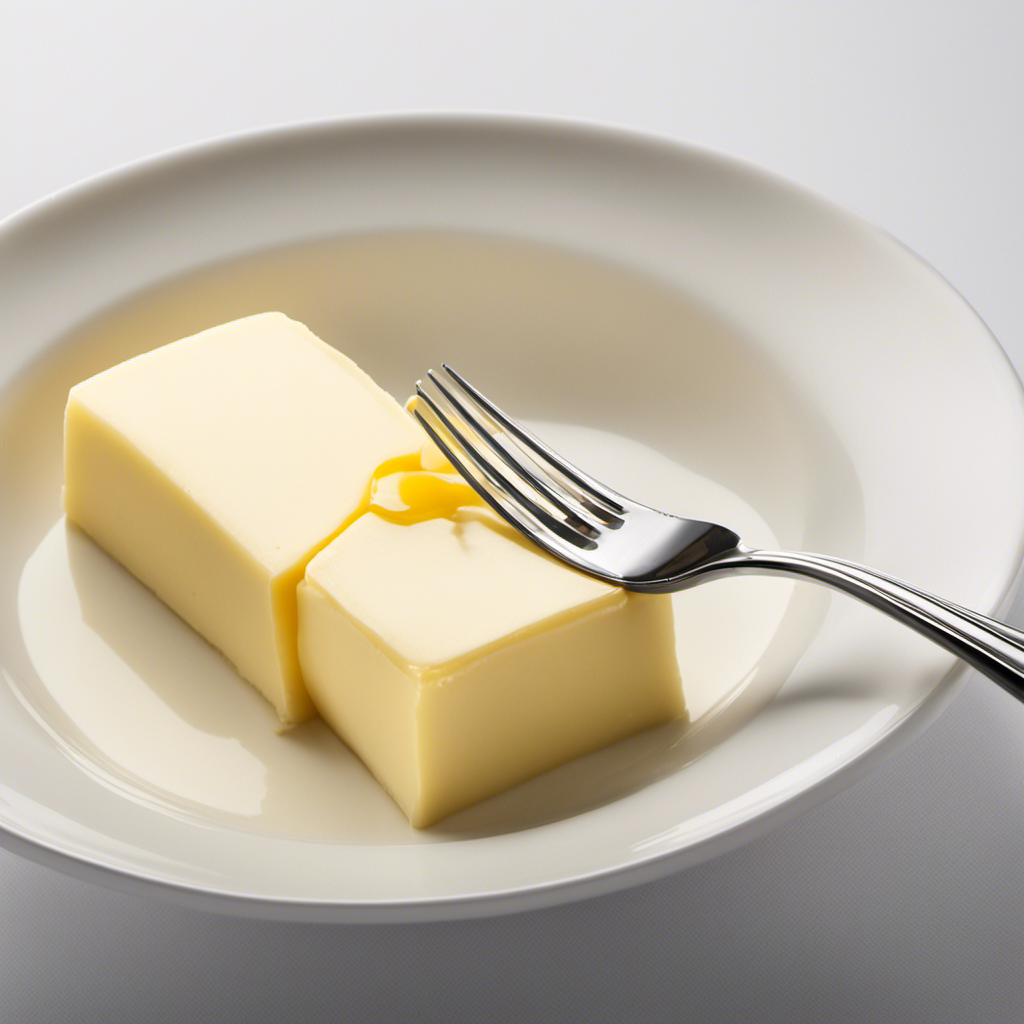
I recall the first time I tried a recipe that required ‘1 stick of butter.’ Standing in my kitchen, holding the stick, I suddenly realized I had no clue how many tablespoons that equated to. It was a moment of perplexity and annoyance.
If only I had known then what I know now: 1 stick of butter equals 8 tablespoons. In this article, I will provide you with a handy butter conversion chart, tips for measuring butter accurately, and insights into common recipes and baking with butter.
Say goodbye to kitchen confusion and let’s dive into the world of butter measurements!
Key Takeaways
- A stick of butter is equal to 8 tablespoons.
- Converting between butter and tablespoons is essential for accurate measurements.
- Calculating tablespoons from butter can be done by dividing the amount of butter by 8.
- The standard ratio is 1 stick of butter equals 8 tablespoons.
The Basics: Understanding Butter Measurements
Understanding butter measurements can be confusing, but it’s important to know that a stick of butter is equal to 8 tablespoons.
When it comes to baking, recipes often call for butter in different measurements, and it’s helpful to know how to convert them accurately.
For example, if a recipe calls for 1/2 cup of butter, you can easily convert it to tablespoons by multiplying 1/2 by 8, which equals 4 tablespoons.
Similarly, if a recipe requires 1/4 cup of butter, you can convert it to 2 tablespoons.
It’s also important to note that butter can be measured in different forms, such as sticks, cups, or grams.
Understanding these butter measurement equivalents will allow you to confidently convert butter for baking and ensure your recipes turn out just right.
Butter Conversion Chart: Sticks to Tablespoons
To convert sticks of butter to tablespoons, it’s helpful to know that there are 8 tablespoons in one stick. Understanding butter tablespoon equivalents is essential for accurate measurements in recipes. Here is a handy butter conversion chart that shows the number of tablespoons in different quantities of butter:
| Sticks of Butter | Tablespoons |
|---|---|
| 1 | 8 |
| 2 | 16 |
| 3 | 24 |
As you can see, each stick of butter is equivalent to 8 tablespoons. So, if a recipe calls for 2 sticks of butter, you will need 16 tablespoons. This conversion chart simplifies the process of converting butter measurements, ensuring that you add the right amount to your recipes. Now that we have established the butter tablespoon equivalents, let’s move on to how to measure butter in tablespoons.
How to Measure Butter in Tablespoons
When it comes to measuring butter in tablespoons, it’s important to understand the conversion ratios and how to calculate the number of tablespoons from a given amount of butter.
The butter to tablespoon ratio can vary depending on whether you’re using sticks of butter or cups of butter.
To ensure accurate measurements in your recipes, knowing how to convert between butter and tablespoons is essential.
Butter Tablespoon Conversion
The stick of butter equals how many tablespoons?
When it comes to butter measurement equivalents, it’s important to know the conversions for different units. In the United States, a standard stick of butter is equivalent to 8 tablespoons or 1/2 cup. This measurement is widely used in recipes and makes it easier to portion out the butter.
However, if you’re using a different measuring system, such as metric, the conversion may vary. In the metric system, 1 stick of butter is approximately 113 grams or 4 ounces. It’s always a good idea to double-check the conversions based on your specific measuring system to ensure accuracy in your recipes.
Now that we know how many tablespoons are in a stick of butter, let’s move on to calculating tablespoons from butter.
Calculating Tablespoons From Butter
Calculating tablespoons from butter can be done by dividing the amount of butter by 8.
When it comes to measuring butter accurately, it’s important to have the right conversion. Butter is often sold in sticks, which are typically labeled with tablespoon measurements. However, if you have butter in a different form, such as a tub or a block, you may need to determine how many tablespoons are in a given amount.
To convert the measurements, simply divide the amount of butter by 8. For example, if you have 1 cup of butter, you would divide it by 8 to get 1/2 cup, which is equivalent to 8 tablespoons.
This simple calculation allows you to accurately measure butter in tablespoons, ensuring precise results in your recipes. Understanding this butter to tablespoon ratio is essential for successful cooking and baking.
Butter to Tablespoon Ratio
Converting butter into tablespoons is a simple process that can be achieved by dividing the amount of butter by 8. This conversion is commonly used in recipes, where specific measurements are necessary for accurate results.
Here are some key points to keep in mind when converting butter measurements:
- The standard ratio is 1 stick of butter equals 8 tablespoons.
- If you have a different amount of butter, divide it by 8 to determine the number of tablespoons.
- For example, if you have 2 sticks of butter, you would have 16 tablespoons.
- It’s important to note that butter can be measured in different ways across countries, so be sure to check the specific conversion for your region.
Quick Tip: Converting Sticks of Butter to Tablespoons
When it comes to measuring butter, understanding the conversions can make a big difference in your cooking.
One common question is how many tablespoons are in a stick of butter.
In this discussion, we will explore butter measurement conversions, the number of tablespoons in a stick of butter, and provide some quick kitchen conversions to help you in your culinary endeavors.
Butter Measurement Conversions
To figure out how many tablespoons are in a stick of butter, you can simply divide it by 8. This is a common measurement conversion used in cooking and baking. Here are some other butter measurement equivalents to keep in mind:
- 1 stick of butter = 8 tablespoons
- 1/2 stick of butter = 4 tablespoons
- 1/4 stick of butter = 2 tablespoons
- 1/8 stick of butter = 1 tablespoon
Knowing these conversions can be helpful when following recipes or adjusting measurements. Understanding how much butter is needed can ensure the right texture and flavor in your dishes.
Now that we know how many tablespoons are in a stick of butter, let’s explore more about the versatility of this ingredient and its importance in various recipes.
Tablespoons per Stick
If you’re unsure of the measurement, 8 tablespoons is the equivalent of one stick of butter. Converting butter to tablespoons can be helpful when following a recipe that calls for a specific amount of butter. Here is a table showing the butter measurement equivalents in tablespoons:
| Sticks of Butter | Tablespoons |
|---|---|
| 1 | 8 |
| 2 | 16 |
| 3 | 24 |
Quick Kitchen Conversions
By using a conversion chart, you can easily determine the equivalent measurements for common kitchen ingredients.
Here are some quick kitchen tips for converting grams to tablespoons:
-
Butter: 1 tablespoon is equivalent to 14 grams. So, if a recipe calls for 100 grams of butter, you would need approximately 7 tablespoons.
-
Flour: 1 tablespoon of flour weighs around 8 grams. If you have 50 grams of flour, that would be approximately 6 tablespoons.
-
Sugar: 1 tablespoon of sugar is roughly 12 grams. So, if you need 75 grams of sugar, you would need approximately 6 tablespoons.
-
Salt: 1 tablespoon of salt weighs approximately 18 grams. If you have 30 grams of salt, that would be around 1.5 tablespoons.
These conversions can be helpful when following recipes or adjusting measurements to suit your needs.
Common Recipes: Butter Measurements in Tablespoons
Did you know that in common recipes, a stick of butter is typically equal to 8 tablespoons? Understanding how to measure butter accurately is essential for successful baking. Here are some helpful tips and equivalents for measuring butter:
| Stick of Butter | Tablespoons | Cups |
|---|---|---|
| 1 | 8 | ½ |
| 2 | 16 | 1 |
| 3 | 24 | 1 ½ |
| 4 | 32 | 2 |
When a recipe calls for a specific amount of butter in tablespoons, it’s important to know the equivalent number of sticks needed. For example, if a recipe requires 12 tablespoons of butter, you would need 1 ½ sticks. Conversely, if a recipe calls for 3 sticks of butter, you would measure out 24 tablespoons.
Now that you know the butter measurement equivalents, let’s dive into the differences between using tablespoons and sticks of butter in baking.
Baking With Butter: Tablespoons Vs. Sticks
To accurately measure your butter for baking, you’ll want to know the difference between using tablespoons and sticks. Here are the benefits of using tablespoons for butter measurement:
-
Precision: Using tablespoons allows for more precise measurements compared to using whole sticks of butter. This is especially helpful when dealing with recipes that require specific ratios of ingredients.
-
Flexibility: Using tablespoons gives you the flexibility to add or subtract butter as needed, without having to worry about cutting a whole stick into smaller portions.
-
Convenience: Tablespoons are readily available in most kitchens, making it easy to measure out the exact amount of butter needed for your recipe.
-
Portion control: Using tablespoons helps you control the amount of butter you add to your baked goods, ensuring consistent results each time.
By understanding the benefits of using tablespoons, you can confidently measure your butter and achieve delicious results in your baking.
Now, let’s explore the handy conversion: sticks of butter to tablespoons for cooking.
Handy Conversion: Sticks of Butter to Tablespoons for Cooking
Now that we understand the difference between tablespoons and sticks of butter in baking, let’s talk about a handy tip for converting between the two measurements.
Sometimes a recipe might call for a certain number of sticks of butter, but you only have tablespoons on hand. Don’t worry, there’s an easy way to make the conversion!
One stick of butter is equal to 8 tablespoons. So, if your recipe calls for 2 sticks of butter, you can simply multiply that number by 8 to get the equivalent in tablespoons, which in this case would be 16 tablespoons.
This handy trick allows you to use alternative measurements without compromising the integrity of your recipe.
Frequently Asked Questions
Can I Use Margarine Instead of Butter in Recipes That Call for Tablespoons of Butter?
Yes, you can use margarine instead of butter in recipes that call for tablespoons of butter. To measure butter in tablespoons, 1 stick of butter equals 8 tablespoons.
How Do I Convert Tablespoons of Butter to Grams or Ounces?
To convert tablespoons of butter to grams or ounces, I would need to know the density of the butter. Without that information, I cannot provide an accurate conversion.
Are There Any Health Benefits to Using Butter Instead of Margarine or Other Substitutes?
There are health benefits to using butter instead of margarine or substitutes. Butter is a natural product with higher nutritional value and contains vitamins A, D, E, and K.
Can I Use Oil as a Substitute for Butter in Recipes That Call for Tablespoons of Butter?
Yes, you can substitute oil for butter in recipes that call for tablespoons of butter. However, keep in mind that the texture and taste of the final product may be different. There are also other alternatives to butter in baking, such as applesauce or mashed bananas.
How Long Does Butter Last in the Refrigerator Once It Has Been Measured Out in Tablespoons?
Once measured out in tablespoons, butter typically lasts in the refrigerator for about 1-2 weeks. To extend its shelf life, you can freeze butter measured out in tablespoons for up to 6 months.
Conclusion
In conclusion, understanding the conversion of butter measurements from sticks to tablespoons is essential for accurate and successful cooking and baking.
By referring to a butter conversion chart or using a simple calculation, you can easily determine the number of tablespoons in a stick of butter.
Interestingly, did you know that in the United States, a standard stick of butter is typically 1/2 cup or 8 tablespoons? This statistic highlights the convenience and consistency of using tablespoons as a measurement unit in many recipes.
Diana’s meticulous nature and editorial prowess set the gold standard for our content. With over a decade in the culinary and publishing industries, her guidance ensures that every article perfectly blends information and entertainment. A culinary experimenter, Diana loves whipping up new butter-based concoctions in her kitchen.
-
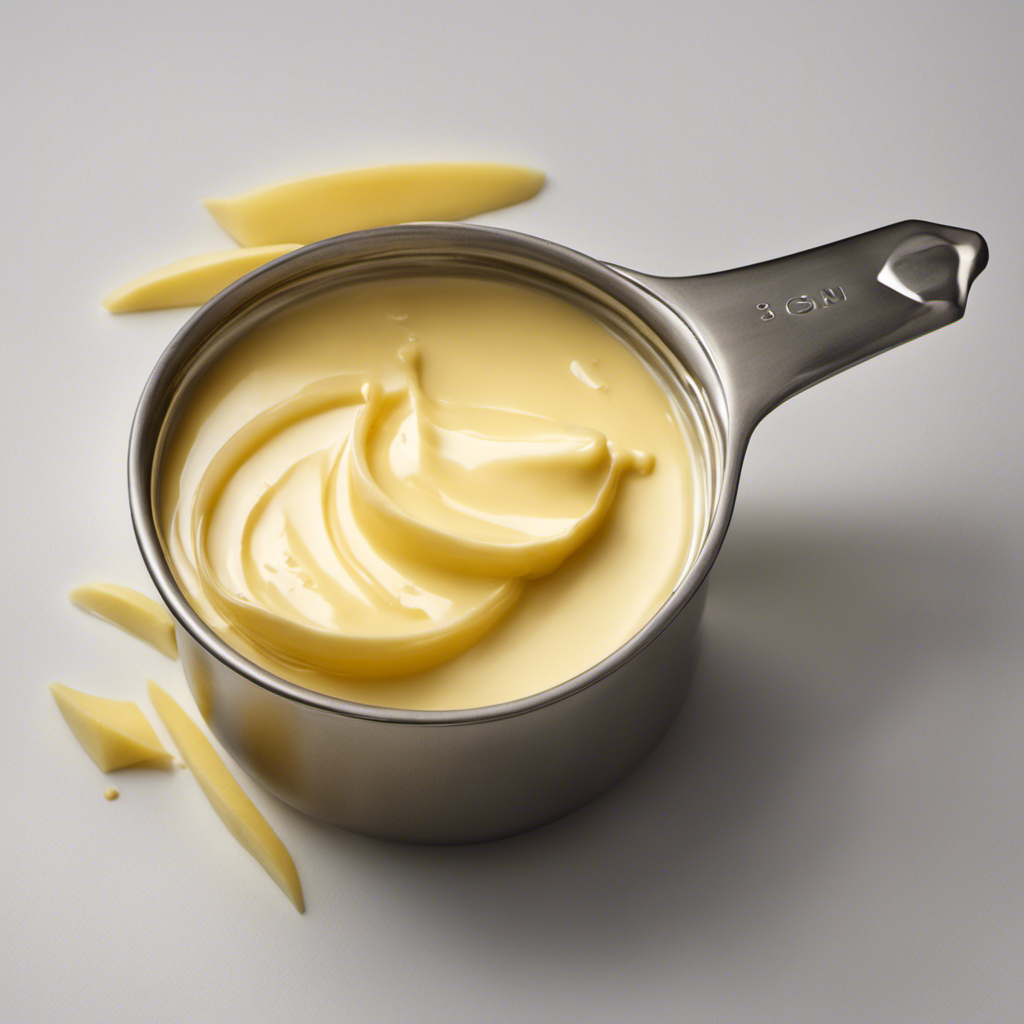
 Butter Tips and Tricks1 month ago
Butter Tips and Tricks1 month agoHow Many Tablespoons in 2/3 Cup of Butter?
-
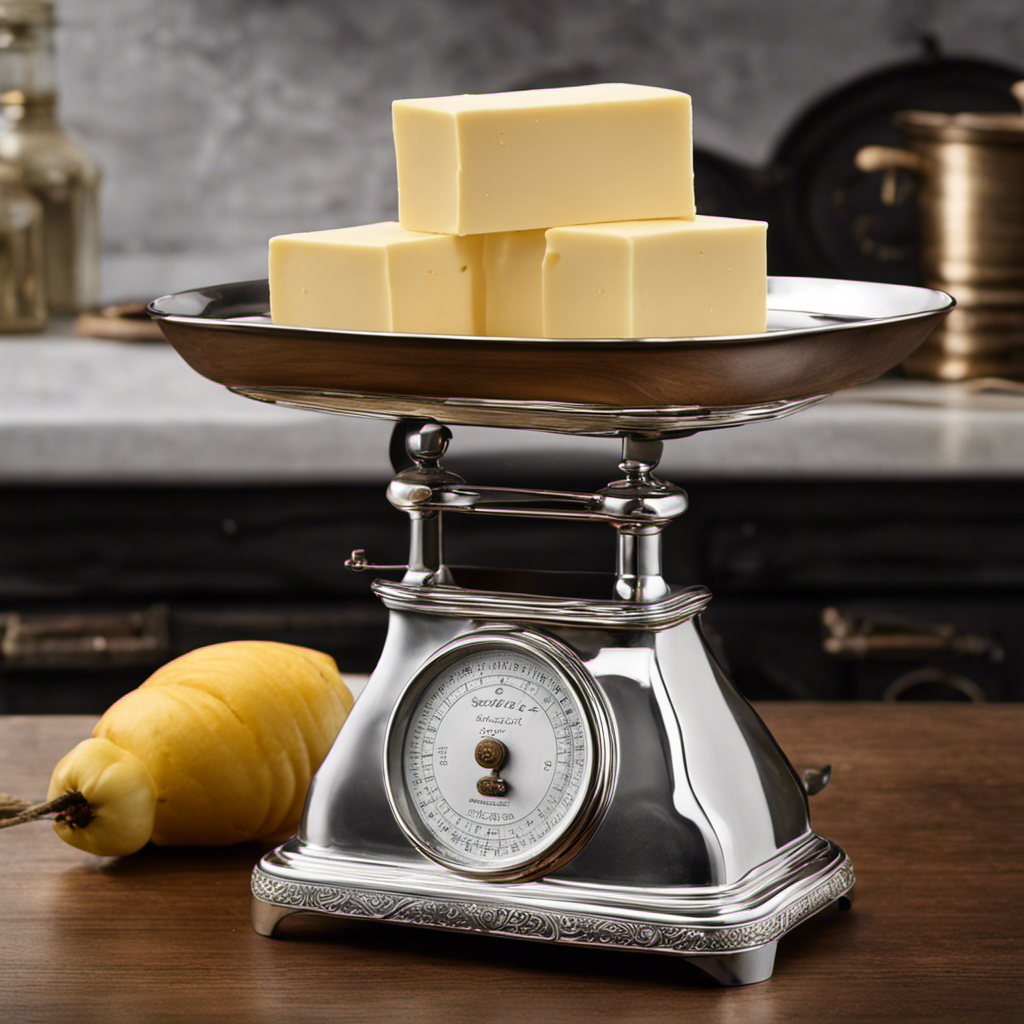
 Butter Tips and Tricks1 month ago
Butter Tips and Tricks1 month agoConverting 3/4 Cup of Butter to Sticks: How Many Sticks?
-
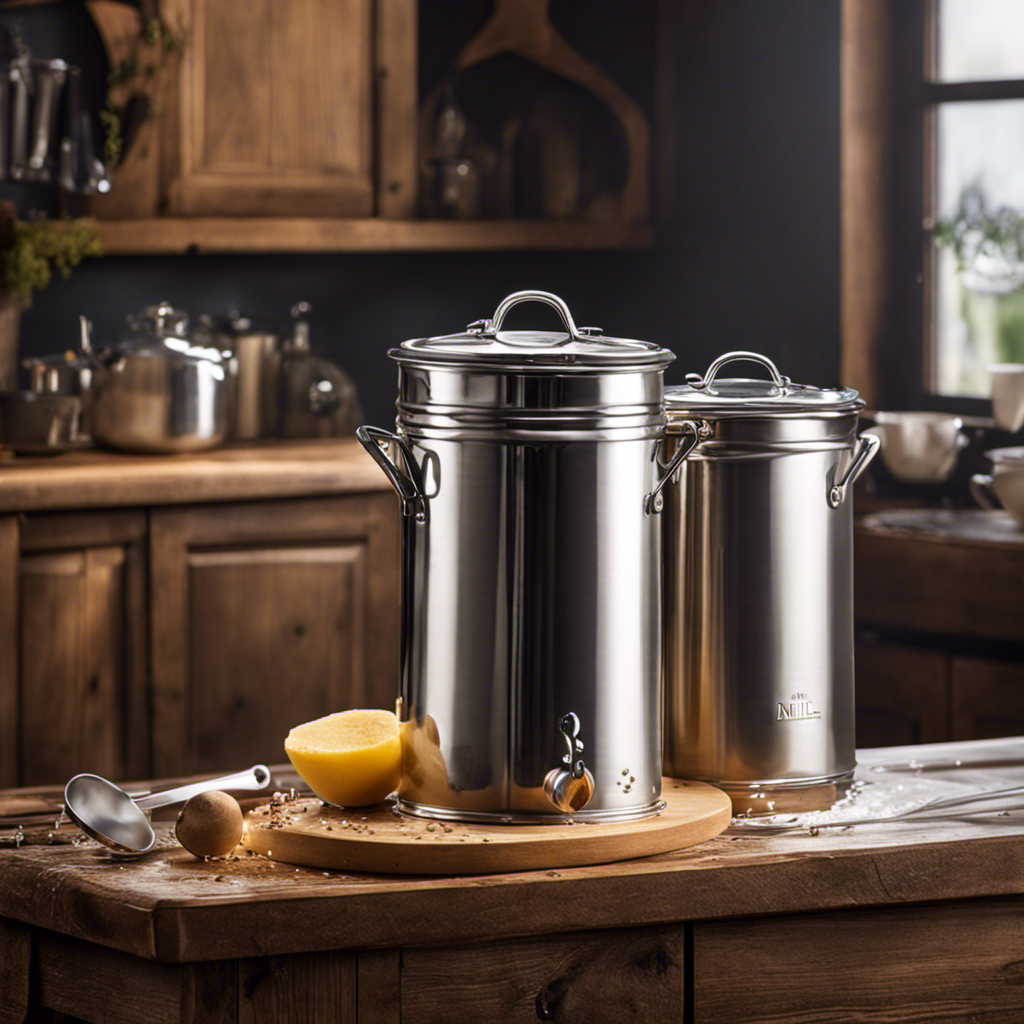
 Recipes & Culinary Uses3 months ago
Recipes & Culinary Uses3 months agoHomemade Butter Making at Home with Fresh Milk
-
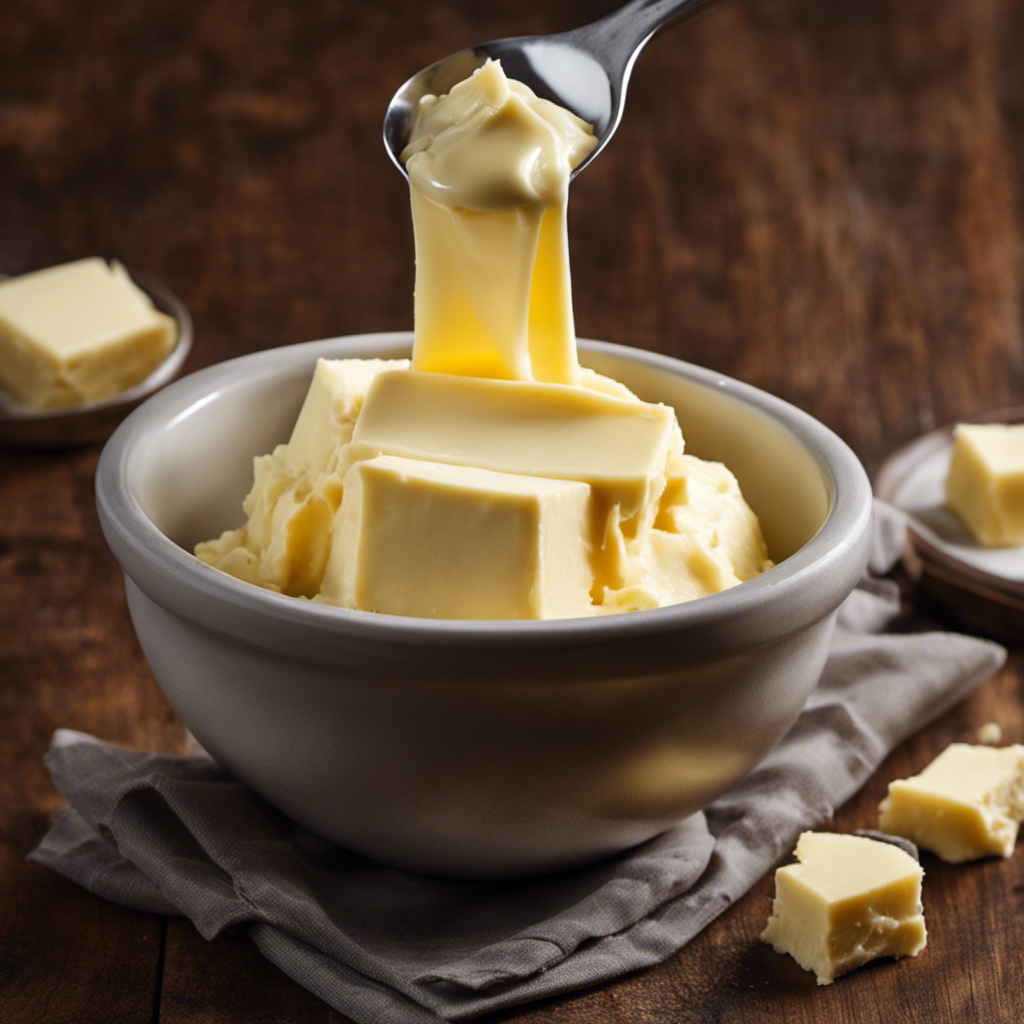
 Butter Tips and Tricks4 weeks ago
Butter Tips and Tricks4 weeks agoHow Many Tablespoons of Butter Are in 3/4 Cup?
-

 Recipes & Culinary Uses3 months ago
Recipes & Culinary Uses3 months ago10 Steps to Cook Delicious Dried Butter Beans
-
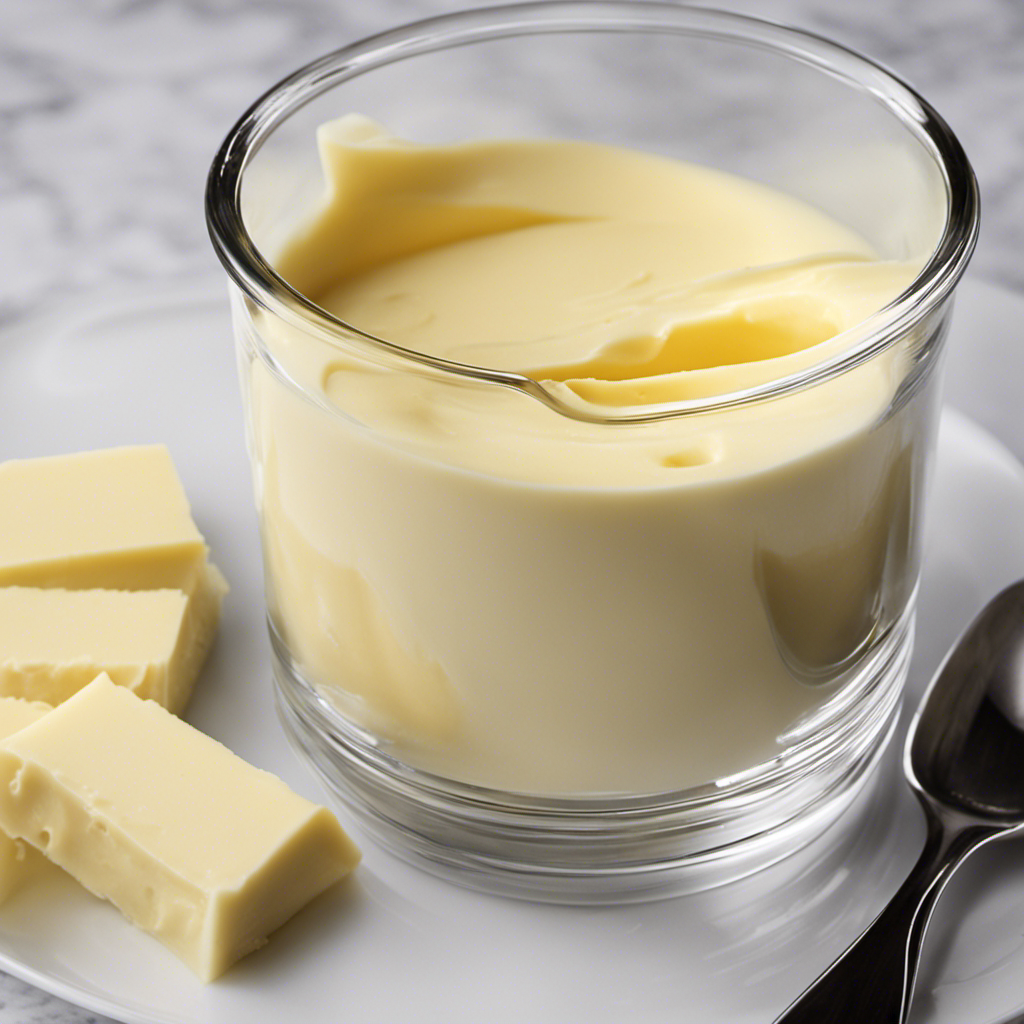
 Recipes & Culinary Uses3 months ago
Recipes & Culinary Uses3 months agoHow Many Tablespoons of Butter in 3/4 Cup: A Simple Guide
-
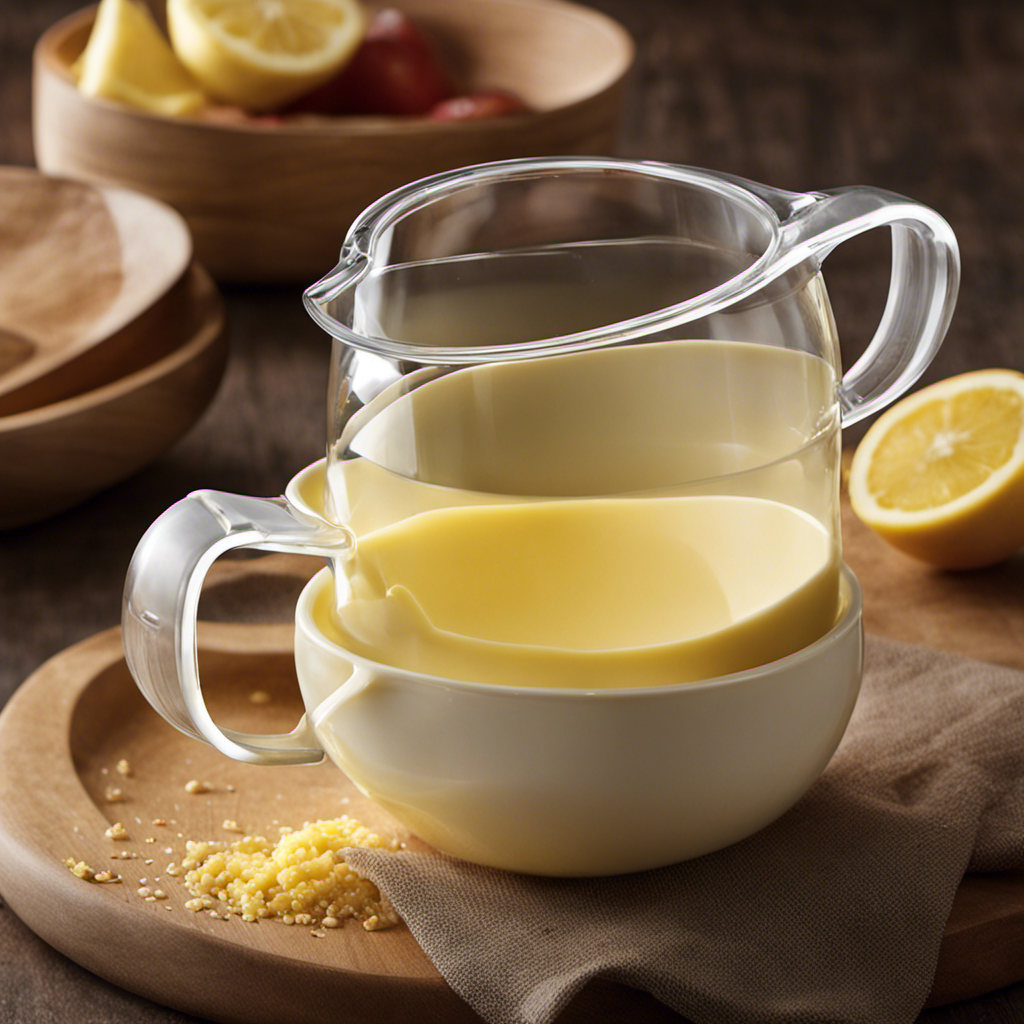
 Butter Tips and Tricks4 weeks ago
Butter Tips and Tricks4 weeks agoHow Many Tablespoons of Butter in 1/3 Cup: A Simple Guide
-

 Butter Tips and Tricks4 weeks ago
Butter Tips and Tricks4 weeks agoHow Many Tablespoons of Butter in 1/4 Cup: A Simple Guide










